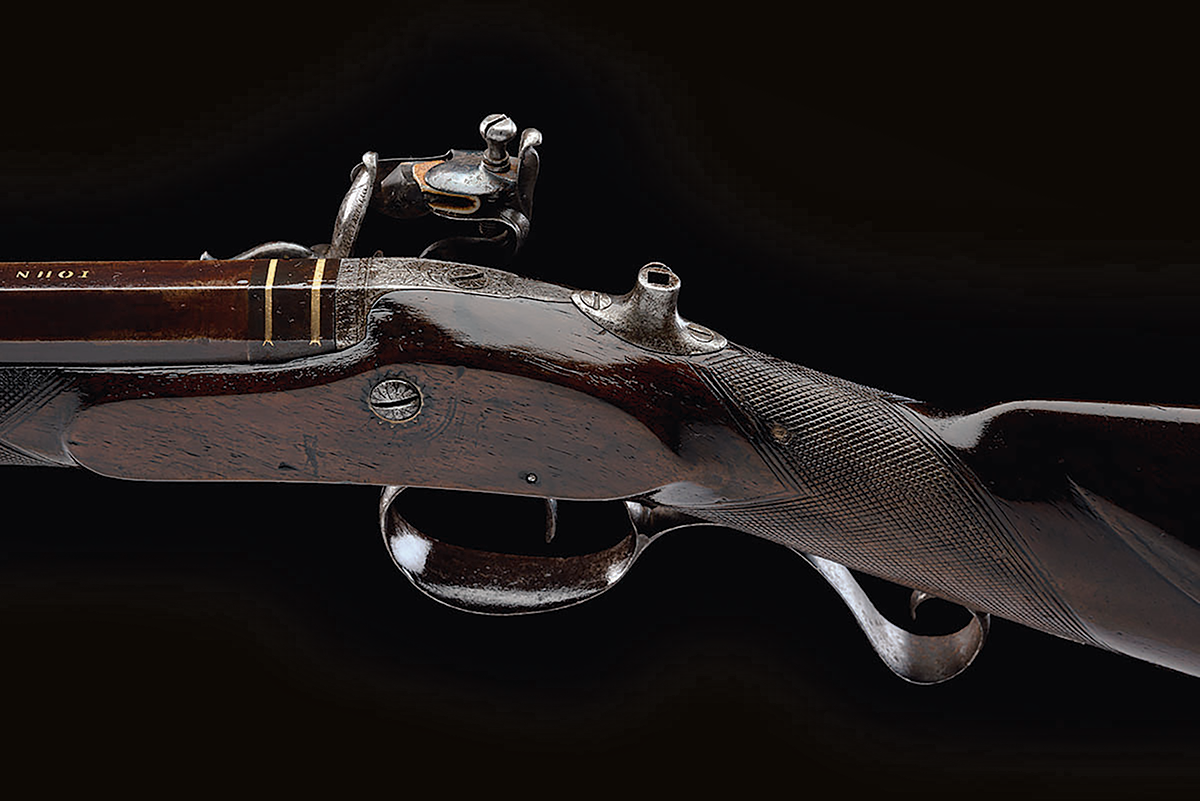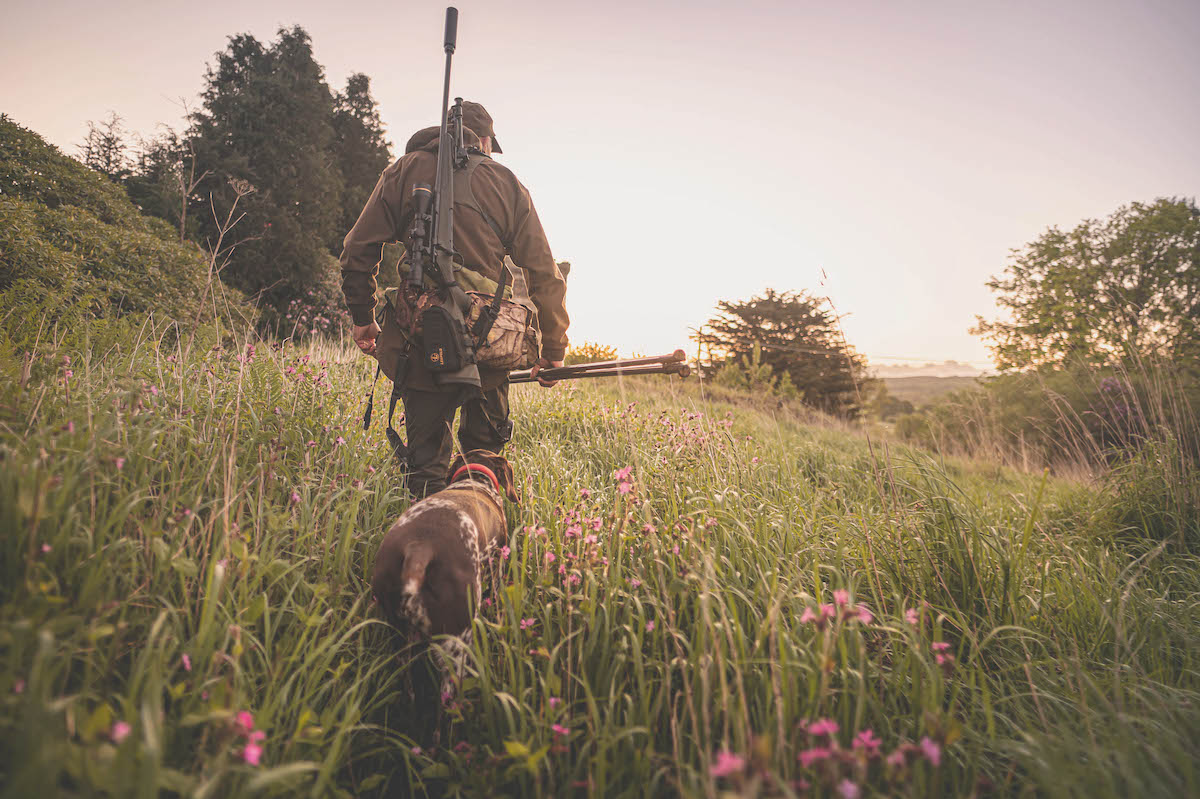Shooting crows with rifles
April is prime time for shooting crows. Bruce Potts looks at crow shooting and talks rifles. Which type work best?
What’s the best way of carrying out crow control? Should you stalk or sit in a hide? Hooded crows can be controlled under GL01 and GL02 which are the conservation and damage licences.
It is in April that you get the best results crow shooting. The birds are busy building their nests in treetops prior to laying a brood of some four to six eggs which will hatch within 20 days. The cock bird roams and scavenges to feed the hen bird who incubates the eggs alone.
You can exploit this as nests are usually easy to see or find, and if undisturbed the crows follow a regular route to and from their feeding areas and tend to use the same resting or spying ledges.
Tactics for crow control
You need to know the bird’s habits and routines to be successful. I have a grudging respect for hooded crows. They can be incredibly difficult to get near and shoot and if you’re successful you do a great service to the farmer, reducing the risk to new-born lambs.
The key to hoodies is realising that they are scavengers at heart and, as such, can be coaxed into range by bait, decoys and calls.
Crows can be hard to stalk and that makes them great sport for me. I get good results from baiting with rabbits, and the use of decoys can be handy if the crows are wary and never really get within range, or you have shot and missed a bird and they are aware of your presence.
Rifle choices
I favour a rifle for 95 per cent of my hooded crow shooting. The only exception is where a flightline is too close. I use anything from a .17 AK Hornet to a .22 rimfire or even an air rifle for closer-range crows, and any .20 or .22 centrefire rifle for longer range shots. However, the 6mm PPC round in a Dave Tooley custom rifle is simply dynamite on crows, and also on roe deer. It is legal too, so in April and May you have both quarry covered.
The rifle allows several advantages: first, having to stalk a hooded crow with an air rifle or .22 rimfire is hard work and brings the balance back in favour of the crow with its keen eyesight, and so satisfies the ethical wish for a fair chase. But second, you can take up a concealed position and work out your ranges with a laser rangefinder, determine a safe backdrop and then wait for the old black cap to arrive.
Regardless, a centrefire rifle in a fast, small-calibre bullet weight such as the .20 Tactical, .17 PPC, .22-250 or .220 Swift using fast twist rifling to handle heavier bullet weights for added range is superb. Or the 6mm PPC gives accuracy and wind-bucking abilities to tip the odds in your favour, and gives a good range to where many a crow thinks it’s safe.

Retrieving a hooded crow
Taking the wily old crow with a rifle
At this time of year the noise of crows and other corvids seems more apparent. Traditionally, crows were a quarry for the shotgun, but increasingly the wily old crow is being taken with a rifle. This can elicit outrage from people concerned about shooting into trees with a solid projectile. Understandably so, but any safe shooter always considers the likelihood of ricochets and always ensures a safe backdrop.
I find stalking a crow with a rifle is true stalking. You literally only get one shot with a crow. They are intelligent and don’t give you a second chance. The balance is tipped in favour of the quarry. There is a wide choice of rifles or cartridges suitable for the task and the style of shooting is also important, whether it involves stalking in close, sitting in a hide, baiting or long-range centrefire shooting. All have pluses and minuses.
I have two distinct approaches to crow shooting. First, you can sit and wait – whether from a hide, hayloft or tucked up in a drainage ditch. The important thing is to position yourself on a flightline, near a sitty tree or near a source of food. The second approach is to stalk, spotting a crow at a distance and then stealthily closing in, depending on the calibre, to take a shot. If this fails, as it often does, I usually stay put and set up a position overlooking woodland or fields that provide food and wait for quarry to come within range.
A farm that is a magnet for crows
Dawn saw me hidden behind some bales with a silage area on my left. This offered a safe backdrop for a .22 rimfire and allowed me to lure in crows with bait. On the way into the farm I had shot a magpie and I placed this 75 yards from my position and waited. A barn behind me offered excellent cover and gave me the opportunity of benefitting from a more elevated position and safe use of any centrefire crow round to take on the birds out in the ploughed field.
The owner of the farm expected results because his land is a crow, magpie and jackdaw magnet. To keep them under control requires a high level of skill – crows seem to have a sixth sense that warns them you are about.
Using the .22 rimfire
Many shooters have a .22 rimfire. Though it is capable of shooting crows, thanks to its ability to overpenetrate and ricochet, it should only be used from an elevated position shooting into the ground or with a suitable backdrop. A head shot is typically fatal and the use of subsonic ammunition with a sound moderator fitted can often lead to more than one crow in the bag. I have been using CCIs fragmenting .22 rimfire ammunition to good effect but the bullets often pass straight through and ricochets are common, although usually they are in fragments rather than a single lump.
The .22 WMR round increases velocity and noise, especially with the Federal V-Max 30-grain load. This extends the range and makes for faster expanding shots.
Probably the best short-range crow round and most commonly used today is the .17 HMR. This sends a 17-grain V-Max bullet down-range at more than 2,500fps, producing a flat trajectory and a fast expanding bullet. This is good for crows for a number of reasons. The flat trajectory means that out to 100 yards little adjustment to aim is necessary. In addition, the faster, lighter bullet is devastating when it hits its mark, achieving humane kills. The HMR round is highly accurate, which is perfect for a small target such as a crow.
Crow Shooting
Putting it to the test Once again I have been out crow shooting, mopping up those troublesome pests that have…
Does an owl decoy really help when crow shooting?
Crow shooting: I read a book that said if you put an owl decoy alongside the pigeon pattern it would…
Clever crows
Whilst I was thinking about all this, a solitary crow glided silently into the treetops, but it was obstructed by branches about 125 yards from me. It signalled to another crow and then lifted off the treetop and slipped away. Crows are smart and do this on a farm. They don’t commit themselves – but let the cannon fodder venture in first in the shape of magpies and jackdaws.
You can either leave these firstcomers alone to encourage the crows to follow or, as in this case, take a magpie. This sends most of the remaining black-feathered friends into a frenzy of cackling. Soon, another magpie will simply have to see why one of his chums refuses to fly off and eventually even the ultra-shy crow will be enticed to an easy meal.
Luck was with me. Having secured the first magpie, the second was quick to follow in the bait. There was a lull before a lone crow lumbered down on a silent arc to within 20ft of the magpie. A .22 CCI bullet despatched it in an instant. And then there were crows all around. The sound-moderated rifle meant the birds had little idea of my location and over the next hour I accounted for two more out in the field with a .20 BR Sako rifle. Finally I had fired seven shots, bagging four magpies and three crows. It was time to call it a day.
Centrefires for crow control
Centrefires hold their own value and my .20 BR Sako rifle is a serious tool for crow shooting. It is able to send a 40-grain bullet at 4,000fps with pinpoint accuracy, meaning distant crows that think they are out of range often find they are not. Even with a sound moderator, however, if you miss, it can often be a long wait until another crow reappears. This is especially true in Scotland where shooting hooded crows from long range is sometimes the only option. In this case the centrefire is safe to use and, for me, it is the way to go with crows. Apart from the greater cost of ammunition and more noise, the high velocity combined with a fragmenting bullet such as a V-Max, Blitz King, Berger or TNT means there is less chance of a ricochet. The impressive energy dispersal when it hits the target also helps to ensure a humane despatch.
Airguns have a distinct use in my crow battery. Usually I leave the 12ft/lb energy for rabbits and magpies as the crow is tough to get within range, whether it is carrion or hooded. The FAC-rated Theoben .20 Eliminator I use, however, and the Daystate .177 both shoot laser-flat and allow a pinpoint shot out to 50 yards.
Air rifles have advantages for crows
Head shots make for a humane kill and the major advantage that the air rifle offers over other rifles is that one can shoot with safety among the barns and skyward at lofted crows, which is a real bonus. An air rifle-only crow hunt takes far more skill than using a centrefire rifle. Where crows often use the same sitty tree, farm building, or dead tree I frequently use the lazy lead technique. That’s to say I use a .25 calibre air rifle, usually a BSA Tactical from a camouflaged position of no more than 20 yards. Those slow-moving large .25 pellets deliver all their energy into the crow and lift it off its feet. That’s handy when you want them to fall away from farm machinery or snagging branches.
Crow control with rifles makes for challenging sport and will test your ability to the limit. I certainly rate it.










